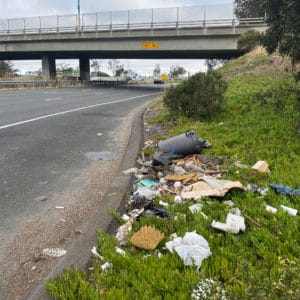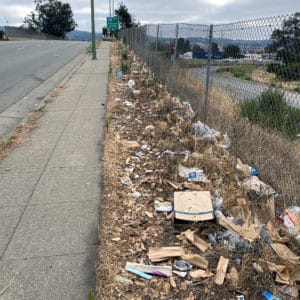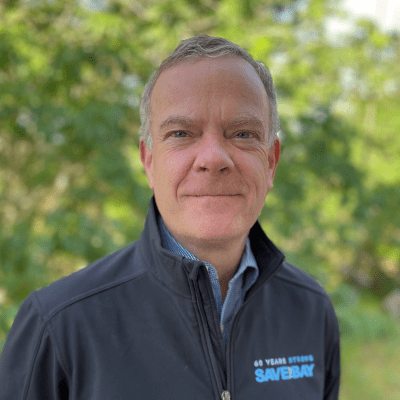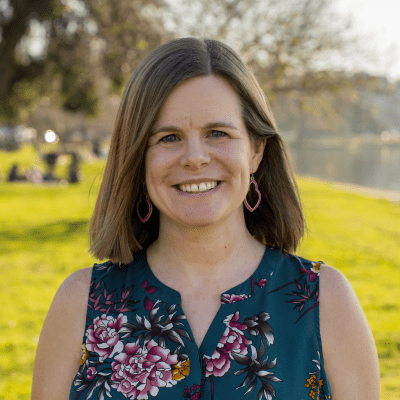Lea este “Bay Story” en Español →
We see it everywhere – trash along our highways in the Bay Area continues to pile up, but it doesn’t stay there. It travels into nearby storm drains and flows into San Francisco Bay where it remains in the environment indefinitely and wreaks havoc on wildlife. So why does trash continue to litter our roadways, end up on our shoreline parks and beaches, and pollute the Bay? The short answer is that Caltrans is not doing its job.
History and Background

The Clean Water Act requires Caltrans to prohibit roadway trash from polluting waterways and harming the Bay itself. In 2016, Save The Bay began demanding the San Francisco Regional Water Board hold Caltrans accountable for the impacts of their trashy roadways. Our advocacy resulted in the Water Board issuing a Notice of Violation, which Caltrans subsequently ignored for three years, leading the Water Board to adopt an unprecedented cease-and-desist order in 2019. Under this order, by 2026 Caltrans is required to prevent trash from entering waterways through storm drains on more than 8,000 acres of its property that have been identified as major sources of trash pollution.
Since the Board issued its order, Save The Bay has focused on ensuring that Caltrans is complying with it effectively. To do so, storm drains along highways must be modified with devices that capture virtually all trash, or Caltrans must ensure that street sweeping and other cleanup efforts consistently remove trash to the same standard – full trash capture.
By the end of June Caltrans was required to show progress on treating 4,000 acres, or half of the required ultimate total, to the full trash capture standard. Unfortunately, the data that Caltrans has provided shows that it has failed to meet that standard over a significant portion of this area, meaning that once again Caltrans is out of compliance with the Water Board’s order.
Let’s explore why this is the case, and what has gone wrong with Caltrans’ plan since the announcement of the enforcement order.
What has gone wrong?

1. Caltrans has presented unproven maintenance and vegetation methods as sustainable strategies to prevent stormwater trash from reaching the Bay.
Caltrans has attempted to prove that it can increase street sweeping and litter pickups to prevent trash from reaching the Bay at the required “full trash capture” rate. It has also argued that vegetation around storm drains acts as a natural filter to catch trash before it enters the drain. However, Caltrans’ own reports have shown that these approaches have fallen short. Worse, Caltrans has tried to claim credit for these methods without receiving proper approval from the Regional Water Board. In their reports, Caltrans admits that they do not have enough maintenance staff or equipment to clean up trash along significant portions of their property beyond what they already do and fails to prove that vegetation consistently prevents trash from entering roadside storm drains to a full trash capture standard.
2. Caltrans has been slow to approve additional types of trash capture technologies for use on highways.
Caltrans has a limited number of screening technologies that it is currently able to use along state roads and highways. The Water Board has urged Caltrans to accelerate evaluation and adoption of more trash capture devices, but Caltrans has dragged its feet, resulting in few projects being built.
3. Caltrans is not partnering effectively with cities.
Caltrans has the ability to partner with cities around the Bay Area to build projects that capture trash from both highways and city streets. This is a win-win for cities working to meet their own requirements for stormwater trash prevention and for the Bay since it leads to less trash pollution in the Bay. Unfortunately, many proposed projects are at a standstill because Caltrans will not provide funding to support the full project development. These projects require hundreds of thousands of dollars for design, planning, and development, which leaves cities with limited budgets unable to move them forward on their own.
How Can You Help?
Sign our petition to demand that the SF Regional Water Board take stronger action to hold Caltrans accountable for violating the Clean Water Act, including:
- Reject flawed maintenance and vegetation methods and prioritize the expanded use of reliable trash screening technologies.
- Ensure that Caltrans accelerates the evaluation of more screening technologies for safe and effective use on state highways.
- Work with Caltrans to change the agency’s funding programs to allow for better collaboration with cities on projects that keep trash out of the Bay.
Save The Bay’s supporters have enabled us to keep working to ensure that Caltrans cleans up our highways and stops allowing trash pollution to impact the Bay.
























































